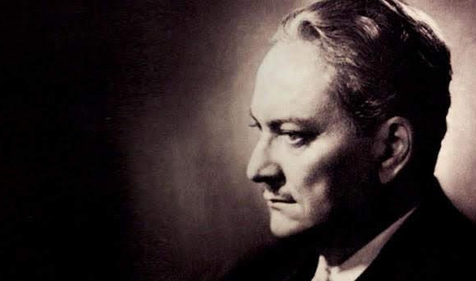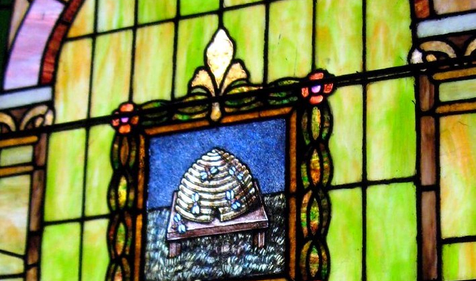Ever dream of taking a trip around the globe to visit the most interesting Masonic buildings in the world? Look no further! We’ve put together a list of Masonic temples that will have you reaching for your suitcase and passport. From Australia to Spain and beyond, the amazing structures mentioned in this week’s blog post will certainly give you the travel bug.
Ever dream of taking a trip around the globe to visit the most interesting Masonic buildings in the world? Look no further! We’ve put together a list of Masonic sites to see that will have you reaching for your suitcase and passport. From Australia to Spain and beyond, the amazing structures mentioned below will certainly give you the travel bug.
Lodge of the Swedish Order of Freemasonry, Stockholm, Sweden
Since 1877, the Swedish Order of Freemasonry has been headquartered in the Baatska palatset in Stockholm. Aside from the usual rooms for Lodge activities, halls for dinners, and offices, the Lodge is also home to a valuable art collection.
There are many Lodge buildings throughout Sweden, but only the Provincial Grand Lodge buildings have Chapter Lodges. These three Lodges meet in separate halls, given that the design of each Lodge room is different and unique in its own way.
Freemasons’ Hall, London, England
Freemasons’ Hall is known as one of the premier (and most famous) Masonic buildings in the world. Its construction began in 1774 by Thomas Sandby, RA, winner of the architect's competition. In May 1776, the building was dedicated and for many years was known as a cultural hotspot for concerts, dinners and all sorts of interesting events. In 1925 however, the building was in need of an expansion and another international architect's competition began.
By 1933, this second construction was completed and over 5,000 Brothers filled the new Freemasons’ Hall for a dedication to Masonic service by Grand Master, HRH The Duke of Connaught, KG. From this time to the 1980s, the Hall was reserved only for Masonic purposes but in 1985, the Hall returned to its original ethos of being both a Masonic building and a center for the public. Today, its public use has become popular within film and television and can be seen on the recent Inside the Freemasons Netflix series.
The Masonic Temple of Philadelphia, Pennsylvania, USA
Constructed in 1873, this Temple is one of the “wonders” of the Masonic world and it’s pretty clear as to why! Each lodge room is based on themes of the ancient architectural world with outward displays of Masonic traditions, connecting us with our past. There is even an Egyptian room with hieroglyphics on the walls that can actually be read! be read!
The Temple was designed by architect James H. Windrim, who was just 27 years old when he won the architect's competition! What’s even more interesting is that its cornerstone, weighing in at almost 10 tons, was leveled using the same ceremonial gavel used by President George Washington to level the cornerstone of the nation’s Capitol building. In 1971, the Temple was listed on the US National Register of Historic Places and designated a National Historic Landmark in 1985.
Masonic Temple of Brisbane, Brisbane, Australia
Freemasonry’s beginnings in Queensland date back to the 1850s, starting with initiative of The United Grand Lodge of Queensland in April 1921. To commemorate this big event, a competition was held for the design of a centrally located temple. The winning design was by the architect, Lange L. Powell, and was in the Classical Revival style. The façade is dominated by massive sandstone Corinthian columns on a granite base, surmounted by a deep entablature and pediment, giving meaning the word “Grand”. The building was opened for use in December 1930 and is now open for tours, meetings, and events.
The centerpiece of the temple, the organ, is placed in a purpose-built chamber, with the pipework hidden from the body of the hall by an ornamental grille. Quite impressive to all who see it!
Zetland Hall, Hong Kong, China
The first Masonic Hall in Hong Kong was built in 1846 by The Zetland Lodge No. 525, English Constitution, and was named Zetland Hall in honor of the Lodge that built it.
The Zetland Lodge itself was named as a compliment to the then Grand Master, Thomas, Second Earl of Zetland, who was The Grand Master of the United Grand Lodge of England from 1844 to 1870.
In 1865 this hall was then replaced by a second larger and more impressive building. This second Zetland Hall lasted until 1944 when it was destroyed during World War II when Hong Kong was under Japanese occupation. Rebuilding of a third Zetland Hall began in 1949 and finished in January 1950, culminating in an impressive dedication ceremony. In January 2000, a service of Thanksgiving conducted by W. Bro. The Reverend John Chinchen, assisted by W. Bro. The Hon Mr Justice Godfrey VP, PJGD, was held to mark the 50th Anniversary of the rededication of Zetland Hall.
Masonic Temple of Santa Cruz de Tenerife, Canary Islands, Spain
This building was constructed for use by the Lodge Añazabetween between 1899 and 1902. The beauty and ornate decoration of this architectural beast is a testament to the time and dedication it took to build. It is considered one of the main Masonic temples in Spain, and the first in the Canary Islands. The building is set back with respect to the surrounding, and contains Egyptian-inspired symbolism.
The structure is divided into three sections, the central has two huge columns with plain shaft and palm-leaf capitals (palmiformes), supporting a triangular pediment bulky. In this eye there is a radiant ray, representing the Supreme Being, Great Architect of the Universe. Flanking each column are two sphinxes (four in total) lying on his stomach and covered with claft. The main door is carved in wood with geometric patterns; and the lintel is decorated with palm leaves and a sun with wings of an eagle, a symbol of Horus.
In November 2016, the Masonic international congress Convent of the Order, was held in Santa Cruz de Tenerife at this Temple. The Congress was attended by over 300 members representing 17 of the 57 regular Supreme Councils in the world, emphasizing the importance of the event for the global Masonic community.
Freemasons Hall, Copenhagen, Denmark
The Danish Order of Freemasons has moved between various addresses and at the beginning of the 20th century was based in Klerkegade, Copenhagen.
When the municipal authorities in Copenhagen sold off a strip of land along Blegdamsvej, the Danish Order of Freemasons acquired a piece of the land. In 1920, a competition was held among its architect members for the design of a new headquarters. Martin Nyrop, architect of Copenhagen City Hall and a fellow Brother, sat on the panel of judges. The winning entry was submitted by Holger Rasmussen, a relatively unknown Danish architect who had mainly designed modest buildings for Danish State Railways. The Freemasons' Hall was of a different stature entirely and unlike most of his usual work. Construction began in 1923 and finished in 1927 and the cornerstone was laid in June 1924 by Christian X of Denmark, who was also Freemason.
Have you visited any of these Masonic temples around the world? We’d like to hear about your trip! Send us an email at [email protected] and you might just be featured in one of our upcoming blogs!
Related Stories
Discover additional Scottish Rite blogs and news on this topic.
-
Manly P. Hall: Philosopher, Mystic, and Freemason
Famous Masons
Read More about Manly P. Hall: Philosopher, Mystic, and Freemason
-
What Does the Beehive Mean in Freemasonry?
Degrees
Read More about What Does the Beehive Mean in Freemasonry?
-
Was Robert Burns a Freemason?
Famous Masons
Read More about Was Robert Burns a Freemason?



